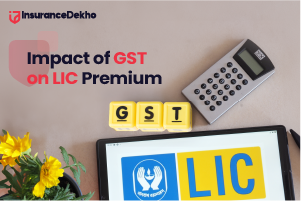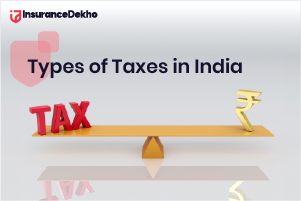Special Allowances for Salaried Employees under Section 10
Updated On Jan 23, 2024
In addition to their regular salary, salaried employees often receive a set amount of money or different kinds of allowances to meet specific job-related needs. While most of these allowances are counted as part of the total income, there are certain exemptions provided under the Income Tax Act. These allowances are typically provided to employees for the services they render or as compensation for working under unique or challenging conditions.
Table of Contents
What is Section 10 of the Income Tax Act?
Section 10 of the Income Tax Act in India outlines various incomes and allowances that are exempt from tax, thereby providing relief to salaried employees. This section is crucial for understanding what components of your income are not subject to income tax, allowing for more effective tax planning. Here’s a brief overview:
- Nature of Section 10: It specifies different types of incomes and allowances that are not included in the total income for taxation purposes.
- Impact on Salaried Employees: For employees, certain allowances and benefits received from their employer can be exempt from tax under this section, reducing their overall taxable income.
- Types of Exemptions: The exemptions under Section 10 include allowances like House Rent Allowance (HRA), Leave Travel Allowance (LTA), Gratuity, and more, each with its specific conditions and limits for exemption.
What is Covered Under Section 10?
Section 10 of the Income Tax Act provides various exemptions that are crucial for salaried employees to understand for effective tax planning. Here’s a table summarising the key exemptions:
|
Exemption Type |
Description |
Conditions/Limits |
|
House Rent Allowance (HRA) |
Exemption on rent paid for residential accommodation. |
Subject to conditions based on salary, rent paid, and location of residence. |
|
Leave Travel Allowance (LTA) |
Exemption for expenses on travel during leave. |
Applicable to two journeys in a block of four years. |
|
Gratuity |
Exemption on gratuity received upon retirement or resignation. |
Exemption limit up to ₹20 Lakhs. |
|
Transport Allowance |
Exemption for transport expenses incurred for commuting to work. |
Exempt up to ₹1,600 per month (₹3,200 for differently-abled employees). |
|
Children Education Allowance |
Exemption for expenses on children's education. |
Exempt up to ₹100 per month per child (up to a maximum of 2 children). |
|
Hostel Expenditure Allowance |
Exemption for expenses on hostel accommodation of children. |
Exempt up to ₹300 per month per child (up to a maximum of 2 children). |
|
Pension |
Commuted pension is exempt for government employees. For others, it is partially exempt. |
Partly exempt for non-government employees, fully exempt for government employees. |
|
Allowance for UN Employees |
Exemption for allowances received by employees of the UN. |
Fully exempt. |
|
Death-cum-Retirement Gratuity |
Exemption on gratuity received by government employees. |
Fully exempt for government employees, subject to limits for others. |
|
Special Allowance |
Specific special allowances like uniform allowance, and academic allowance are exempt. |
Exempt to the extent of actual expenditure incurred. |
These exemptions under Section 10 play a significant role in reducing the taxable income of salaried employees. Understanding these can help in effective tax planning and maximising take-home salary.
What are the Various Sub-parts of Section 10?
Section 10 of the Income Tax Act is comprehensive, covering a range of incomes and allowances that are exempt from tax. Here's a table detailing the various sub-parts of Section 10:
|
Sub-part of Section 10 |
Income/Allowance Type |
Brief Description |
|
Section 10(1) |
Agricultural Income |
Income derived from agriculture is exempt from tax. |
|
Section 10(2) |
Share from Income of HUF |
Share of a member from the total income of HUF is exempt. |
|
Section 10(10) |
Gratuity |
Exemption on gratuity received upon retirement or death, subject to certain conditions. |
|
Section 10(10A) |
Commuted Pension |
Commuted pension is exempt, fully for government employees, and partially for others. |
|
Section 10(10AA) |
Leave Encashment |
Exemption on leave encashment upon retirement or resignation, subject to certain limits. |
|
Section 10(10B) |
Retrenchment Compensation |
Exemption on compensation received at the time of retrenchment. |
|
Section 10(10C) |
Voluntary Retirement Scheme (VRS) |
Exemption on amounts received under VRS, up to a specified limit. |
|
Section 10(10D) |
Life Insurance |
Sum received under a life insurance policy, including bonus, is exempt. |
|
Section 10(13A) |
House Rent Allowance (HRA) |
Exemption on HRA received, subject to conditions based on rent paid, salary, and location. |
|
Section 10(14) |
Specific Allowances |
Exemptions for various allowances like travel, research, uniform allowances, etc. |
|
Section 10(15) |
Interest Income |
Exemption on interest from specified securities, bonds, etc. |
Each of these sub-parts caters to specific types of income or allowances and has its own set of conditions for exemption. Understanding these can greatly aid salaried employees and other taxpayers in effective tax planning.
Conclusion
Understanding the various allowances and exemptions under Section 10 of the Income Tax Act is an essential aspect of tax planning for individuals, especially those in salaried employment. These exemptions play a pivotal role in reducing the overall taxable income, leading to substantial tax savings.
FAQs on Allowances Exemption for Individuals
Q1: What is House Rent Allowance (HRA) exemption?
A1: HRA exemption is for employees receiving HRA as part of their salary. It's exempt up to the least of actual HRA received, 50% of salary (40% if not residing in metro cities), or rent paid minus 10% of salary.
Q2: Who can claim a Transport Allowance exemption?
A2: Salaried employees who receive a transport allowance can claim exemption up to ₹1,600 per month (₹3,200 for differently-abled employees) to cover commuting expenses between home and work.
Q3: Is Children Education Allowance exempt from tax?
A3: Yes, Children Education Allowance is exempt up to ₹100 per month per child for a maximum of two children.
Q4: What is the exemption limit for Hostel Expenditure Allowance?
A4: Hostel Expenditure Allowance is exempt up to ₹300 per month per child for a maximum of two children.
Q5: How is Leave Travel Allowance (LTA) exempt from tax?
A5: LTA is exempt from tax based on actual travel costs for two journeys in a block of four years.
Q6: Can an employee claim exemption for both HRA and home loan interest?
A6: Yes, an employee can claim an exemption for HRA and also a deduction for home loan interest under separate sections if they are paying rent and servicing a home loan simultaneously.
Q7: Are medical allowances exempt from tax?
A7: Medical allowances are taxable. However, medical reimbursement up to ₹15,000 per annum against actual bills was exempt, but this exemption is not available from FY 2018-19 onwards.
Q8: What is the tax treatment of Gratuity?
A8: Gratuity is exempt up to ₹20 lakhs for government employees, and limits apply for others based on eligibility and years of service.
Q9: Is the transport allowance for differently-abled individuals different?
A9: Yes, differently-abled individuals are eligible for a higher transport allowance exemption of ₹3,200 per month.
Q10: Can NRIs claim these exemptions?
A10: NRIs who earn income that is taxable in India can claim these exemptions if applicable to their salary structure.



























